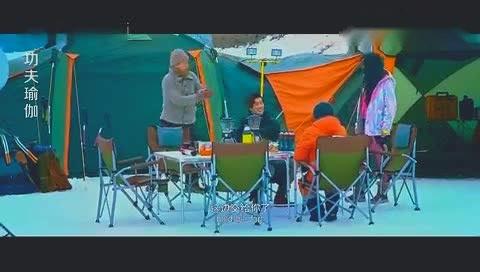
作文一:《英语作文:Martial Arts中国功夫》500字
Martial Arts
Martial Arts,what is often referred to as Kungfu at the time,is a fighting style developing in a long-term in China.Now,it is more and more popular especially in foreign and regarded as a kind of traditional sports even being the representative of China culture.In ancient generations,in order to survive in a hostile environment,our ancestors created the primary means to defence and attack with bare hands and fists.Martial Arts is a bat mode,but we advocate peace and virtue rather than aggression and violence,which was upheld by martial artists generation by generation.
作文二:《功夫熊猫英语作文》2300字
1.一切都不是偶然。
There are no accidents.
2.何必躲呢,躲不过的。
One meets its destiny on the road he takes to avoid it
3.着急的时候脑子也乱了,静下心来就好了。
Your mind is like this water, my friend , when it is agitated ,it bees difficult to see ,but if you allow it to settle , the answer bees clear.
4.做不做呢,要不要呢?
Quit don’t quit. Noodles don’t noodles.
5.俗语说,既往者之不鉴,来着尤可追!那就是为什么今天是present(现在/礼物)
There is a saying, yesterday is history, tomorrow is a mystery But today is a gift. That is why it's called the present (the gift)
6.乌龟:是的,看着这棵树,
我不能让树为我开花,
也不能让它提前结果
Yes,look at this tree Chivu(师傅)
I can not make it bloosm and suits me, nor make it bear food before it’s time.
7.师傅:但有些事情我们可以控制
我可以控制果实何时坠落
我还可以控制在何处播种
那可不是幻觉 大师
But there are things we can control
I can control when the fruit will fall
... And I can control
What time to seed
That is not illusion , Master
8.乌龟:是啊 不过无论你做了什么
那个种子还是会长成桃树
你可能想要苹果 或桔子
可你只能得到桃子
那个种子还是会长成桃树
Yes, but no matter what you do,
That seed will grow to be a peach tree
You may wish for an Apple or an orange
But you will get a peach
9.师傅:可桃子不能打败太郎
But peach can not defeate Tai Long
10.乌龟:也许它可以的 ,如果你愿意引导它、滋养它、相信它。
Maybe it can if you are willing to guide it , to nuture it , to believe in it .
11. 阿宝,天不遂人愿,
况且这本不是天意,
阿宝,忘了其它的事情,
你的使命一直都在向你召唤。
我们是面条家族,
血管中流着这样的血。
I'm sorry things didn’t work out …
It’s just what it’s meant to be
Paul ,forget everything else ,your destiny still awaits.
We are Noodle folk
Broth runs deep through our veins
12.你不能走,真的武士决不会退却
you cannot leave ,real warrior never quits.
13.师傅:那你为什么不退出呢?你知道我一直想把你赶走,可你还是留下来了。
Why didn’t you quit ? you know I was trying to get rid of you, but you stayed
阿宝:是啊,我留下来了。我留下来是因为每次你往我头上丢砖头,或说我难闻,这很伤我的心。可最伤我心的是,我每天努力练习,却还是这个我。我留下来,因为我以为,如果还有人能改变我,能让我焕然一新,那就是你--中国最伟大的功夫师父!
Yes ,I stayed.
I stayed ,because every time you threw up brick on the head or said I smelled, it hurts. But it could never hurt more than I did everyday in my life just being me. I stayed ,because I thought .. If anyone could change me, could make me not me, it was you the greatest Kong Fu teacher in the whole of China!
10.Enough talk, let's fight!少废话,决斗吧
11、There'e no charge for awesomeness or to attractiveness !!
牛人不收费,迷死人不偿命~
12.我私家汤的绝密食材,就是…什么都没有。
The secret ingredient of my secret ingredient soup is...nothing.
13. 认为它特别,它就特别了。
To make something special ,you just have to believe it’s special.
最后更新时间:2008-07-23 23:58:02
作文三:《中国功夫武术作文》900字
中国功夫武术
中国功夫在我国叫做武术,在外国才叫做中国功夫。中国武术中有许多武器,例如:刀、剑、矛、枪等兵器。中国武术中的功夫有:九阴白骨掌、大力金刚指、一阳指、醉拳、一指神功、咏春拳、降龙十八掌……还有许多的门派,比如:峨嵋派、少林派、四方派。拳术也有多种,如太极拳、长拳、形意拳、八卦掌、南拳……中国武术起源于古代战争。传说炎黄时代,东方有个以野牛为族徽的蚩尤部落,崇尚武技,勇猛善斗,他们善于抓扭、摔跌。随着生产力的发展,武术也进入新的阶段。战国时期,诸侯纷争,战争频繁,士兵们在战争中掌握的一些搏击竞技技巧经过慢慢的发展与演化,就形成了后来的中国武术。
【写作指导:小学生怎样做“看图口述作文”】
“看图口述作文”就是通过观察画面,进行口头看图作文的方法,也可以叫做看图说话。“看图口述作文”练习方便,是写好“看图作文”的必要基础。
那么,怎样练习“看图口述作文”呢?
一、借助问题。就是自己针对画面提出一些问题来看清画面所展示的时间、地点、人物、事情;弄懂所看图画的中心思想及主要内容。如下面这幅图,我们可以借助图上画的是什么时间,什么地方,画了哪些人,他们在干什么,谁是主要的等等问题,搞懂画面的具体内容。
二、多用描述语言。要多用描述的语言把画面所展示的内容说出来,不仅要说出画面上有哪些景、物、人,更要说出这些景、物、人是怎样的。如上面这福图,我们可以抓住两个送水女少先队员的神态、带着的东西及动作等进行具体描述。
三、发挥联想。凭借图中所能观察到的形象、动态及各种标志进行想象、推测,这样,才能把画面内容说得生动形象、具体感人。如从上面这幅图两个女少先队员的表情、手势,我们可以联想她们可能会说些什么,以及心情怎样等。
四、前后延伸。“看图作文”的画面是静止的,只是一瞬间的景象。我们在“看图口述作文”时,就要想想发生在画面前边的事和后边的事,选择适当的、重要的内容,充实到口述作文中去。如这两位送水的少先队员是哪个学校的,是谁,她们为什么要到田头去送水。这是发生在画面前边的事,需要说明。又如她们把水送到田头怎么样,收割稻子的叔叔、阿姨会说些什么。这是发生在画面后边的事,也要作些交待。这样,才能使看图口述作文有头有尾,有来龙去脉。当然前后延伸的部分,只能是最必要的内容。不能说得太多。
作文四:《潮汕功夫茶英语作文》7400字
潮汕功夫茶英语作文
篇一:我与茶文化——潮汕功夫茶
我与茶文化——潮汕功夫茶
潮汕功夫茶,是融精神、礼仪、沏泡技艺巡茶艺术、评品质量为一体的完整的茶道形式
潮汕功夫茶也称为“工夫茶”,两者含义虽然有点不一样,但意思是可以互通的。“工夫”一词在潮语中有本领、本事、时间的含义,更有精致、讲究、用心、周到之寓意。工夫茶从茶具、冲泡到品饮都十分讲究“工夫”,也因“工夫”而赋予了工夫茶的文化内涵。
功夫茶有“和、敬、精、洁、思”的文化精神。潮汕功夫茶有“和、敬、精、洁、思”的文化精神。和既指茶事活动追求和谐的核心思想,也指平和自在的心态。敬既指待客尊敬之态度,也指对茶及大自然之敬畏。精既指精致之器具,也指精湛之冲泡技艺。洁既指茶事之整洁,亦喻法茶性之高洁。思既指茶可涤神益思之功效,更喻人生真谛之参悟。
北方人的喝茶方式总是让我很纳闷,往一大杯水里扔进一些茶叶,泡一泡,就可以喝了 虽然这种喝茶方法效率比较高,不过他们更多的是吧茶当作解渴的饮料喝,而不是一种悠闲自在地品茶或者叫品茗也好。而外国人喝茶更是让人啼笑皆非,往一杯泡的
发黑的红茶里加入牛奶就喝了起拉 茶味全无,茶的精粹消失殆尽。
而真正地喝茶,应该是气定神闲,悠然自我地喝茶。潮汕功夫茶之功夫正式这种境界地升华。一个人坐在茶桌前,不是危襟正坐,而是随意而坐,气定神闲,不管泰山崩于前,还是黄河之水泛于前;一套潮汕功夫茶茶具,一般情况下有四个小杯,一个特殊茶壶,最好茶壶是由紫沙呢制作的;一壶煮沸的水而且还要不断加热;冲茶的方法也是很由讲究的,如关公巡城,韩信点兵。
不管用什么方法,冲茶还是要不紧不慢的,讲究心手协调,内外一致。喝茶不是狼吞虎咽,而是慢慢品味,任茶香直扑鼻孔,慢慢沁入心肺,与内心的平静容为一体。
有一句话说得好:“朱颜会消失,白发不会放过我们的。且让我们一起饮茶吧~让我们的心象茶叶初生尚未舒卷那样,那时我们既不为成功、失败挂怀,也不为男女之情忧心,更不为人生的长路而心情惆怅。那时,我们只是笑,并在笑中看见光。”
潮汕功夫茶,作为饮中精品,在喜欢茶的茶人眼里,堪称上乘之佳饮,而它,在我的眼里,茶好似养育了自己的母亲,虽历经无数个春秋寒暑,我感恩茶如同深深感念着母亲一样。古往今来,多少宏篇巨著曾记载过它,无数文人雅士曾倾情礼赞过它。作为普通凡人的我,从幼至今,对茶曾赋予过无数怀想,对茶有过好多刻骨铭心的记忆,在对茶的深深感悟和亲身感知中,从遥远的过去到现在,我一直认为茶如母,茶母恩泽于我的恰如神圣的母亲对
儿女的哺育之恩一样。茶,对我的哺育之情宛如慈爱的母亲施予我的深似海、重如山的绵源不尽的爱一样,扶助着我们从艰难的岁月中一步步走过来,滋养着我们不断成长。
从很小很小开始,我就喜欢上喝茶。茶,能在我难过的时候,给我带来了欢乐;茶,能在我遇到困惑不懂时让我找到解决问题的方法;茶,能在我失败的时候鼓励我支持我??????饮茶说茶话,让我认识了不少好朋友,与家人关系更密切,给我生活中增添了不少乐趣~
潮汕功夫茶整体上有:精、洁、和、思四个特点。精:指的是茶具的精美;洁:指的是茶叶、茶具的洁净;和:和爱本一家,家人一起品茶聊天更能体现家人的和睦,培养感情;思:品茶可以提神,消解疲劳,启发人的思维。
看来,一杯小小的工夫茶中,竟蕴含着如此多的潮汕文化、心理因素在里面,实在是令人叹为观止。就让我们一起泡一杯浓浓的工夫茶,慢慢的品味这工夫茶中的奥妙吧。
喝茶可以补虚扶正、益气润肺、提神益志、养颜回春。
功夫茶,开胃健月卑,生津止渴,提神醒月西,延年益寿??
功夫茶,潮汕人的闲情雅逸、志趣豪情,潮汕人待人接物的礼 节、为人处世的象征??
功夫茶,茶浓情更浓,永远追寻着春天的足迹??
品茶不仅是品茶,还可以用茶的文化底蕴为自己添一抹神韵,用茶的清香之气冲淡生活的烦恼,松弛绷紧的神经,充实自己的
情感。苏辙有诗:“闽中茶品天下事,倾身事茶不知劳。”这可见茶的功效。对酒当歌,对茶恣情。
朋友,在潮汕喝上功夫茶绝非是一件难事。你若到潮汕为客,可要记住一定要品尝一下潮汕这一美食,才不枉你到潮汕一趟呵~这几年在潮汕还开了不少茶馆呢~未进茶馆,走到门口你就能闻到一种古朴古香的味道,扑面而来的是一种
曲典雅的风味。
因此,朋友相聚,知己相逢,不妨一同品茶。当然,还要品味融入茶中的文化、风俗,果真如此,品茶才算有了情调。朋友,品一品潮汕功夫茶说不定你还能品味出另一番味道,品味出自己对于茶道的见解,提出来,把你宝贵的意见奉献给潮汕,也好让潮汕的茶道更完美
篇二:五年级作文:功夫茶
五年级作文:功夫茶
!--adend--
第1篇:潮汕功夫茶 400字
功夫茶是潮汕一带品茶的一种风尚,以其独特、精细而闻名。
功夫茶起源于宋代,在广东的潮州府(今潮汕地区)及福建的漳州、泉州一带最为盛行,乃唐、宋以来品茶艺术的承袭和深入发展。苏辙有诗曰:“闽中茶品天下高,倾身事茶不知劳。”
品功夫茶是潮汕地区很出名的风俗之一,在潮汕本地,家家户户都有功夫茶具,每天必定要喝上几轮。即使侨居外地或移民海
外的潮汕人,也仍然保存着品功夫茶这个风俗。可以说,有潮汕人的地方,便有功夫茶的影子。
所谓的功夫茶,并非是一种茶叶或茶类的名字。而是一种泡茶的技法。之所以叫功夫茶,是因为这种泡茶的方式极为讲究。操作起来需要一定的功夫,主要可以用二十个字来概括:乌龙入宫,淋盖刮沫、高冲低洒、关公巡城和韩信点兵。同样喝茶的礼节也要注意。一般是三个茶杯放在一起,意为品茶,筛茶人一般是要等到别人喝完了才喝,这是对客人的尊重,还有喝茶的时候一定要拿离自己最近的那杯。
潮汕人喝工夫茶可以说是茶浓情更浓。
五年级:谢炫舟
篇三:潮汕茶文化
潮 汕 茶 文 化 潮汕人的功夫茶结情
品功夫茶是潮汕地区很出名的风俗之一,在潮汕本地,家家户户都有功夫茶具,每天必定要喝上几轮。即使是侨居外地或移民海外的潮汕人,也仍然保存着品功夫茶这个风俗。可以说,有潮汕人的地方,便有功夫茶的影子。
一杯功夫茶,泡出了海外游子的多少故乡梦,泡出了潮汕子民的多少家乡情。一杯浓浓的工夫茶,泡出了多少优美动人的故事。虽然不是酒,却胜似酒,多少人由此而陶醉。诗人李曙光曾高声咏唱:“淳朴的乡亲捧起你/捧起对生活的诚挚和热爱/海外的赤子捧起你/捧起对故乡缠绵的眷恋/一杯功夫茶,是一阙古老的歌
谣。” 一杯功夫茶,体现出潮汕人谦逊礼让的美德。
一杯功夫茶,还能体现潮汕人的爱心。客无亲疏,每当你进了门,主人便会立刻冲泡起功夫茶,一杯香浓的功夫茶,一番热情的话语,为你驱走疲倦,为你带来温馨。宋人杜小山说:“寒夜客来茶当酒。”郑板桥也说:“最爱晚凉佳客至,一壶新茗泡松萝。”可谓茶香飘飘,香飘四海,人情冷暖,情暖人心。喝一杯潮汕功夫茶,享受许多温暖的人情味,令人回味无穷。
一杯功夫茶,引出多少茶文茶趣,就让我们都来品那茶香飘飘的潮州功夫茶吧??
所谓功夫茶,并非一种茶叶或茶类的名字。而是一种泡茶的技法。之所以叫功夫茶,是因为这种泡茶的方式极为讲究。操作起来需要一定的功夫,此功夫,乃为沏泡的学问,品饮的功夫。功夫茶起源于宋代,在广东的潮州府(今潮汕地区)及福建的漳州、泉州一带最为盛行,乃唐、宋以来品茶艺术的承袭和深入发展。苏辙有诗曰:“闽中茶品天下高,倾身事茶不知劳。”
功夫茶的起源
功夫茶顾名思义,一是花时间,二是讲究本领。它历史悠久,据说是由福建的“小杯茶”演变来的。宋代,中国上层社会“斗茶”之风盛行,谁家买得好茶,就要请客。宾客中有好茶或带来媲美,或请来暗斗。这种风气逐步演变到茶农、茶商的试茶评茶。由于日日品茶,喝得太多也难受,就大杯改小杯而成为很浓的小杯茶,这就是工夫茶的雏形。潮汕是鱼米之 1
乡,人们喜欢饮浓茶,“小杯茶”也由茶商传入潮汕。日久天长,渐渐在茶具、茶叶和冲泡技术上越来越讲究,形成了独特的“潮汕工夫茶”。 功夫茶起源于宋代, 在广东的潮州府(今潮汕地区)及福建的漳州、泉州一带最为盛行, 乃唐、宋以来品茶艺术的承袭和深入发展。苏辙有诗曰:“闽中茶品天下高,倾身事茶不知劳。”
品功夫茶是潮汕地区很出名的风俗之一, 在潮汕本地,家家户户都有功夫茶具,每天必定要喝上几轮。即使用乔居外地或移民海外的潮汕人,也仍然保存着品功夫茶这个风俗。可以说, 有潮汕人的地方,便有功夫茶的影子。
“工夫”一词,在潮汕话中是做事方法讲究的意思,这里指烹茶品茶方法的讲究,潮汕工夫茶有一套讲究茶具、茶叶、用水、冲法、品味的茶经。“工夫”也作“功夫”,一般有四解:工程和劳力;素养;造诣,成就的程度;空闲时间。“工夫”与烹茶方法联袂,称“工夫茶”或“功夫茶”。故所谓的功夫茶,并非一种茶叶或茶类的名字。而是一种泡茶的技法。
潮汕功夫茶,是融精神、礼仪、沏泡技艺巡茶艺术、评品质量为一体的完整的茶道形式。
潮汕饮茶文化
潮汕人不可一日无茶,所以潮人平时待客,第一件事便是泡茶。婚、丧、喜、庆,无一离得开茶,如过去结婚之曰,就有新娘向长辈下跪捧茶的仪式。有亲人自海外归来,家中媳妇及下辈,如第一次见,也要得行“跪茶”之礼。至于丧事,如其娘家长辈到
来,晚辈媳妇也要捧甜茶叩跪行礼,然后才议事。祭祀拜神,也要“清茶三杯”等等。
潮汕工夫茶,已成为当前研究潮汕文化的重要内容。饮工夫茶则是人们日常生活中的一种交际礼尚,因而产生了许多礼俗。这些礼俗也体现出了潮汕人的心理。在这次的《功夫茶座》里,我们就来谈谈这方面的话题。 潮汕人爱喝茶这其中便有着潮汕人的好客心理。早在明朝中期,饮茶之风就已经遍及潮汕地区,从城市到农村,从有钱人家到普通家庭,几乎家家都摆设有一套工夫茶具。无论家居自饮、客来礼敬、拜祖祭神或是婚丧嫁娶,处处可以看见茶的踪迹。喝工夫茶是潮汕人的风俗,以茶待客,更是潮汕人的优良传统之一,暗合了工夫茶道“和、敬、精、乐”的文化精髓。 茶在日常生活中,已成为潮汕礼俗文化的一个重要组成部分。“寒夜客来茶当酒”,对来客敬茶以示礼仪,共诉相聚的喜悦,是茶道的基础,也是好客心理的一种体现。
作为主人,泡茶待客,对于“茶叶”是非常有讲究的:
2
“头冲脚惜(音同),二冲茶叶”主人冲茶时,头冲必须冲后倒掉不可喝。因为里面有杂质不宜喝饮,本地有“头冲脚惜(音同),二冲茶叶”之称,要是让客人喝头冲茶就是欺侮人家。
“新客换茶”宾主喝茶(本文来自:WWw.bDFQy. 千 叶 帆文摘:潮汕功夫茶英语作文)时,中间有新客到来,主人要表示欢迎,立即换茶,否则被认为“慢客”,“待之不恭”。换茶叶之后的二冲
茶要新客先饮,如新客一再推卸叫“却之不恭”。
“暗下逐客令”本地群众热情好客,每以浓茶待人,但遇到饮茶时间过长或是互相的话不投机,主人故意不换茶叶,这时,客人就要知道这是主人“暗下逐客令”,只有抽身告辞。
“无茶色”主人待茶,茶水从浓到淡,数冲之后便要更换茶叶,如不更换茶叶会被人认为“无茶色”。
潮汕人爱喝茶这其中也暗含着潮汕人的儒雅心理。
潮汕平原独特的地理环境、人文环境结合起来,演化成一种雅致、儒气的潮汕文化。而其中最具代表性的当推潮汕工夫茶。早在北宋,就已经有有关潮州茶事的最早记录,那时潮汕已经在宴席间有品茶的程序了。从烧炭、洗杯到沏茶、喝茶,每道工序都体现了“仁爱致祥”的儒家气息。饮工夫茶不是以解渴为惟一目的,它繁琐的技艺、程序包涵了自然生活的情趣,是一种艺术化的品饮。工夫茶浓而不腻、淡而悠远的清香,淳朴天然,令人在品茗过程中心神清净,一种享受生活的感觉油然而生。
很多谚语就体现了潮汕人饮工夫茶的儒雅心理,一敬一请之间,潮汕人的温文儒雅展现无遗。
“酒满敬人,茶满欺人”因为酒是冷的,客人接手不会被烫,而茶是热的,满了接手时茶杯很热,这就会让客人之手被烫,有时还会因受烫致茶杯掉下地打破了,给客人造成难堪。
“先客后主,司炉最末”。在敬茶时除了论资排辈,按部就班之外,还得先敬客人后敬自家人。待在场的人全都喝过茶之后,这
个司炉的,俗称“柜长”(煮茶冲茶者)才可以饮喝,否则就是对客人的不敬,叫“蛮主欺客”、“待人不恭”。
“强宾压主,响杯檫盘”客人喝茶提盅时不能任意把盅脚在茶盘沿上檫,茶喝完放盅要轻手,不能让盅发出声响,否则是“强宾压主”或“有意挑衅”。
“喝茶皱眉,表示弃嫌”客人喝茶时不能皱眉,这是对主人示警动作,主人发现客人皱眉,就会认为人家嫌弃自己茶不好,不合口味。
饮茶的时候主客之间的礼让更是体现在“先尊后卑,先老后少”这句谚语之中,蔡先生说到:
“先尊后卑,先老后少”到人家跟前说声“请喝茶”,对方回以“莫拘礼”、“莫客气”、“谢谢”。如果是较多人的场合,杯不便收回,放在各人面前桌上。在第一次斟茶时,要先尊老后卑幼,第二遍时就可按序 3
斟上去。对方在接受斟茶时,要有回敬反应,喝茶是长辈的,用中指在桌上轻弹两下,表示感谢;小辈平辈的用食、中指在桌面轻弹二次表示感谢。 潮汕地区地少人多,农业生产精耕细作。精巧的生产方式潜移默化地塑造了潮汕人的细腻心灵,因此工夫茶精巧茶具的使用和冲泡程序的讲究,又与潮汕人细腻的心理相吻合。潮汕工夫茶,从茶叶的采制,茶具的选配,到用水、候汤、冲饮,都非常有学问,细腻讲究,正好反映潮汕人精细的性格特征。此外,潮汕人有很强烈的文化认同感,那些闯荡四方的潮汕
生意人更是自觉不自觉地流露出这种“潮汕情结”。 “独在异乡为异客”,远游的海外潮人总会珍藏着工夫茶具和上好的茶叶,见是家乡来的客人,一定会以茶相待。
看来,一杯小小的工夫茶中,竟蕴含着如此多的潮汕文化、心理因素在里面,实在是令人叹为观止。在今天节目结束之际,就让我们一起泡一杯浓浓的工夫茶,慢慢的品味这工夫茶中的奥妙吧。
潮州功夫茶行茶法
潮州工夫茶是我国茶艺中最具代表性的一种,它是在唐宋时期就已存在的“散茶”品饮法的基础上发展起来的,属散条形茶瀹泡法的范畴,是瀹饮法的极致。虽然盛行于闽粤港台地区,但其影响早巳遍及全国,远及海外。潮汕功夫茶独成一格,如果烹茶没有功夫,那也是不能叫做功夫茶了。所以功夫茶之收功全在烹茶,冲茶之法。下面介绍潮州工夫茶的表演程式。
潮州工夫茶表演用具:茶,以武夷岩茶、安溪铁观音为好。器,能容水3-4杯的孟臣罐(宜兴紫砂壶)、若琛瓯(茶杯)、玉书碾(水壶)、潮汕烘炉(电炉或酒精炉)、赏茶盘、茶船等。
(一)鉴赏香茗:主泡师用茶则从茶仓中取出一壶量的茶叶,置于赏茶盘中,助泡接过赏茶盘,让客人鉴赏干茶,并介绍所用茶的特点。
(二)孟臣淋霖:用沸水浇壶身,其目的在于为壶体加温,即所谓“温壶”。
(三)乌龙入宫:将茶叶用茶匙拔入茶壶,装茶的顺序应是先细再粗后茶梗。
(四)悬壶高冲:向孟臣罐中注水,水满壶口为止。
(五)春风拂面(刮顶淋眉):用壶盖刮去壶口的泡沫,盖上壶盖,冲去壶顶的泡沫。淋壶可冲淋壶盖和壶身,但不可冲到气孔上,否则水易冲入壶中。淋壶的目的一为清洗,二为使壶内外皆热,以利于茶香的发挥。
(六)熏洗仙颜:迅速倒出壶中之水,是为洗茶,目的是洗去茶叶表面的浮尘。
(七)若琛出浴:用第一泡茶水烫杯,又谓“温杯”,转动杯身,如同飞轮旋转,又似飞花欢舞。
4
(八)玉液回壶:用高冲法再次向壶内注满沸水。
(九)游山玩水:也称运壶,执壶沿茶船运转一圈,滴净壶底的水滴,以免水滴落入杯中,影响茶之圣洁。
(十)关公巡城:循环斟茶,茶壶似巡城之关羽。此番目的是为使杯中茶汤浓淡一致,且低斟是为不使香气过多散失。
(十一)韩信点兵:巡城至茶汤将尽时,将壶中所余斟于每一杯中,这些是全壶茶汤中的精华,应一点一滴平均分注,因而戏称韩信点兵。 (十二)敬奉香茗:先敬主宾,或以老幼为序。
(十三)品香审韵:先闻香,后品茗。品茗时,以拇指与食指扶住杯沿,以中指抵住杯底,俗称三龙护鼎。品饮要分三口进行,“三
口方知味,三番才动心”,茶汤的鲜醇甘爽,令人回味无穷。
(十四)高冲低筛:冲泡第二泡茶,重复第八步动作。
(十五)若琛复浴:手法同若琛出浴。
(十六)重酌妙香:重复第九、十、十一步动作。
(十七)再识醇韵:重复第十三步动作。
(十八)三斟流霞:冲泡第三泡茶。铁观音等乌龙茶,内质好,香气浓郁持久,有“七泡有余香”之美称。因是表演,故只冲泡三次,希望能为来宾带来美好的回味。
(十九)谢茶敬客:完成整套潮州工夫茶的冲泡程序。
潮州工夫茶的表演以冲泡两次茶为宜,最多不超过三次。这样既给来宾一个完整的印象,又不使表演时间过于冗长。如果在生活中,则可以继续冲泡下去,且每一次冲泡,时间上应有一段间隔,不可一壶泡完紧接着又泡一壶,间隔时间大致为10分钟左右。
品茶
潮汕功夫茶没有像中国功夫那样驰名中外,但她作为潮汕文化的精粹,容入了潮汕人世世代代的情感。茶对于潮汕人来说,已经不是简单的饮料,而是生活中的生活,她承载着潮汕人的生活态度,映耀着潮汕人的处世哲学。
北方人的喝茶方式总是让我很纳闷,往一大杯水里扔进一些茶叶,泡一泡,就可以喝了 虽然这种喝茶方法效率比较高,不过他们更多的是吧茶当作解渴的饮料喝,而不是一种悠闲自在地品茶或者叫品茗也好。而外国人喝茶更是让人啼笑皆非,往一杯泡的
发黑的红茶里加入牛奶就喝了起来 茶味全无,茶的精粹消失殆尽。
而真正地喝茶,应该是气定神闲,悠然自我地喝茶。潮汕功夫茶之功夫正式这种境界地升华。一个人坐在茶?a href=“://.bdfqy./lango/” target=“_blank” class=“keylink”>狼埃 皇俏,笳 撬嬉舛 ㄉ裣校
还?a href=“://.bdfqy./taishano/” target=“_blank” class=“keylink”>泰山崩于前,还是黄河之水泛于前;一套潮汕功夫茶茶具,一般情况下有四个小杯,一个特殊茶壶,最好茶壶是由紫沙呢制作的; 5
作文五:《看《功夫之王》,学中国功夫英语表达》1900字
《功夫之王》正在全球热映,影片中成龙、李连杰两位华人功夫巨星华丽的武打让功夫迷们欲罢不能,电影票房在全球一路飘红,影片成为《卧虎藏龙》、《英雄》后在全球刮起“中国旋风”的又一华语力作。《功夫之王》编剧约翰?福斯科是一个地道的功夫迷,他在影片中向中国武侠电影致敬的同时也对中国古典文化进行了大力展示和融合。《功夫之王》中出现了很多中国的谚语和功夫迷们耳熟能详的功夫专有名词,比如螳螂拳,水上漂等。这些中国本土文化符号,经过老外们的西化,改造成了西方人能够理解的词句,读来别有一番独特的趣味。
武功:
Praying mantis 螳螂拳
Dragon style 虎拳
Flight on water 水上漂
Fly through air 飞檐走壁
Spanking monkey 疾猴
Drunken fist 醉拳
Secret gong-fu from the south 南派功夫
No shadow kick 无影脚
Buddha palm technique 如来神掌
The iron elbow 铁拳
One-finger death touch 一阳指
Horse stance 马步
功夫电影:
Same kind the thirteen monks 少林十三和尚
Enter the dragon 猛龙过江
The bride with white hair 白发魔女传
神话:
The forbidden kingdom 天庭
Five elements mountain 五指山
Jade emperor 玉皇大帝
Peach banquet 蟠桃宴
Heavenly minister 天庭官员
The river of sand 流沙河
the Elixir of Immortality 长生不老之药
Drunken Master 醉八仙
语句:
Has skills of his own 不是省油的灯
Come drink with me 我要你血债血偿
Heaven help us 阿弥陀佛
Two tigers cannot live on the same mountain 一山不容二虎
Vengeance has a way of rebounding upon oneself. 冤冤相报何时了
影片中有一段对中国武术精义的阐释有一段行云流水的英文。
英文台词:
Gongfu. Hard work over time to acplish skill. A painter can have gongfu. Or the butcher who cuts meat every day with such skill...his knife never touches bone. Learn the form, but seek the formless. Hear the soundless. Learn it all, then forget it all. Learn The Way, then find your own way. The musician can have gongfu. Or the poet who paints pictures with words and makes emperors weep. This, too, is gongfu. But do not name it, my friend, for it is like water. Nothing is softer than water...yet it can overe rock. It does not fight. It flows around the opponent. Formless, nameles...the true master dwells within. Only you can free him.
中文台词:
功夫,它是长时间的苦练和用功得来的~画家有他的功夫,可以用指尖作画,杀猪的也有他
的功夫,切肉可以不沾到骨头~从有形,进而为无形,从无形中悟出真谛,你就不再受招式
的困扰,武功也才能变得出神入化~一个乐手到了最高境界,可以为曲子增添生命,一个了不起的诗人,帝王都会为他的诗感动。这也是功夫~功夫只能意会不能言传,它就像是水~因为水是无孔不入的,正所谓滴水可以穿石,它不与对手正面抗衡,而是从对手身边穿过去,无形,无状,真正的功夫在你的心里,只有你才可以释放出来~
作文六:《看《功夫之王》,学中国功夫英语表达.doc》1900字
看《功夫之王》,学中国功夫英语表达
作者:梅特林 发布:2008-10-30 《功夫之王》正在全球热映,影片中成龙、李连杰两位华人功夫巨星华丽的武打让功夫迷们欲罢不能,电
影票房在全球一路飘红,影片成为《卧虎藏龙》、《英雄》后在全球刮起“中国旋风”的又一华语力作。《功
夫之王》编剧约翰?福斯科是一个地道的功夫迷,他在影片中向中国武侠电影致敬的同时也对中国古典文化
进行了大力展示和融合。《功夫之王》中出现了很多中国的谚语和功夫迷们耳熟能详的功夫专有名词,比
如螳螂拳,水上漂等。这些中国本土文化符号,经过老外们的西化,改造成了西方人能够理解的词句,读
来别有一番独特的趣味。
武功:
Praying mantis 螳螂拳
Dragon style 虎拳
Flight on water 水上漂
Fly through air 飞檐走壁
Spanking monkey 疾猴
Drunken fist 醉拳
Secret gong-fu from the south 南派功夫
No shadow kick 无影脚
Buddha palm technique 如来神掌
The iron elbow 铁拳
One-finger death touch 一阳指
Horse stance 马步
功夫电影:
Same kind the thirteen monks 少林十三和尚
Enter the dragon 猛龙过江
The bride with white hair 白发魔女传
神话:
The forbidden kingdom 天庭
Five elements mountain 五指山
Jade emperor 玉皇大帝
Peach banquet 蟠桃宴
Heavenly minister 天庭官员
The river of sand 流沙河
the Elixir of Immortality 长生不老之药
Drunken Master 醉八仙
语句:
Has skills of his own 不是省油的灯
Come drink with me 我要你血债血偿
Heaven help us 阿弥陀佛
Two tigers cannot live on the same mountain 一山不容二虎
Vengeance has a way of rebounding upon oneself. 冤冤相报何时了
影片中有一段对中国武术精义的阐释有一段行云流水的英文。
英文台词:
Gongfu. Hard work over time to acplish skill. A painter can have gongfu. Or the butcher who cuts meat every day with such skill...his knife never touches bone. Learn the form, but seek the formless. Hear the soundless. Learn it all, then forget it all. Learn The Way, then find your own way. The musician can have gongfu. Or the poet who paints pictures with words and makes emperors weep. This, too, is gongfu. But do not name it, my friend, for it is like water. Nothing is softer than water...yet it can overe rock. It does not fight. It flows around the opponent. Formless, nameles...the true master dwells within. Only you can free him.
中文台词:
功夫,它是长时间的苦练和用功得来的~画家有他的功夫,可以用指尖作画,杀猪的也有他的功夫,切肉
可以不沾到骨头~从有形,进而为无形,从无形中悟出真谛,你就不再受招式的困扰,武功也才能变得出
神入化~一个乐手到了最高境界,可以为曲子增添生命,一个了不起的诗人,帝王都会为他的诗感动。这
也是功夫~功夫只能意会不能言传,它就像是水~因为水是无孔不入的,正所谓滴水可以穿石,它不与对
手正面抗衡,而是从对手身边穿过去,无形,无状,真正的功夫在你的心里,只有你才可以释放出来~
作文七:《功夫熊猫中国元素英语影评》2400字
08临床七年二系二班 彭雪峰 2008210047
There is no secret at all
_____kongfu panda
Some lines layman’s language film. A reflection of the light of wisdom and philosophy of color. Especially the wise turtle master, he says many things are full of meaning, under the peach tree he says to the raccoon ” When I can not force the peach blossom, when the results, I can only wait for it to mature, As if to tell us ”
Everything has its natural growth cycle, we can not change nature, it can be carefully and patiently cultivated and cared for, to make it better quality, do not to pull up the seedlings in order to help them grow faster philosophy quite mean haste makes waste. And the word” Your mind is like water, when agitated, it is difficult to see, but when it calmed down, the answer bees clear” It shows the Chinese pursuit the spiritual realm: Looking hard gas rather the sea.” Yesterday is history, tomorrow is mystery, and today is a gift.” Stressed the importance of the present reality, only to seize the day to see the history, we can see the future. At the end of the film, those words said by the raccoon are also full of meaning. “You are the Dragon Warrior, you bring peace to this valley
to believe it’s special. You have to do is to believe, fully believe. I think this is also the secret of the dragon scroll is blank Why the interpretation of the powers of the world's most powerful secrets is the self-confidence, and only believe in yourself to unlimited potential. The soul of Chinese culture, including the soul of Chinese martial arts are equal grams of yin and yang, which is a usual way of thinking. The film, we can see a lot of reflection at the soul of China. Imitation of Nature in the martial arts form, to show the tiger, crane, mantis, monkey, snake image in the five-Jie. The origin of the five original form of ancient martial arts, Chinese culture is embodied in the idea inside the Imitation of Nature. In addition, the image of the sacred tears spring Tai Chi, Kung Fu is China's another genre - the embodiment of Tai Chi were, stress is allelopathy, going to the system properties object, Other things such as wonderland general of the Chinese landscape, light and sweet traditional Chinese music, the most food with Chinese characteristics, as well as mysterious and interesting in the eyes of foreigners calligraphy and acupuncture, in the film have a manifestation of apt. As long as you believe, anything is possible
作文八:《中国功夫-英语演讲稿(原创)》1900字
Good morning, teachers and fellow schoolmate:
My name is XXX Today it's my great pleasure to give a presentation about chinese “gongfu”, the same means of martial arts nowdays, ( At the
beginning ,I really hope I can make a good performance today.,Thank you!
It is well known that Chinese gongfu is the Chinese traditional cultures and crystallization of the Chinese wisdom., it is the main carrier of national culture that accumulate the deep thoughts. As fast as I know, Chinese culture is also making an impact on Western culture; the popularity of Chinese Gongfu, including sanda Taijiquan, 咏春, and so on., is not limited to China and bee more and more popular in the world.
I don't know why i am so infatuated with the gongfu, maybe I am influenced by the gongfu star,such as Bruce Lee 李小龙,and his master “叶问”
Bruce Lee is the master martial generation in my mind, also carry forward the Chinese culture hero., And he was famous for his kungfu movies, . otherwise,
I worship 叶问 because of the spirit of his self-reliance and never give up ,no matter how tough the life is. Even in the worst circumstances ,He is also still pleasure in helping others at the same time. Many years passed by, the spirit of them still encourages people to work hard for the rejuvenation [ri,d?u:vi'nei??n] of
the Chinese nation.
Martial arts can strengthen body, make us more strong In the spirit., it es
from china,and belongs to the world, , As a Chinese, we are all proud of it..
早上好,老师和同伴同学:
”,同样的是“武术”的意思,(在开 我的名字是XXX,今天我很高兴能给个主题演讲关于中国“功夫
始,我真的希望我能有个好的表现today),谢谢!
众所周知,武术是中华民族的传统文化和中国人民智慧的结晶,是民族文化的主要载体和深层思想的积累。据我所知,中国文化对西方文化有深刻影响,普及的武术有散打、太极拳、咏春,等等,并不局限于中国,但已越来越受欢迎,在世界上。
我不知道我为什么如此迷恋功夫,也许我是受到了明星的功夫,如李小龙,还有他的师父叶问。在我的认知当中,李小龙是武术的一代宗师,也弘扬中华文化的英雄。他因他的功夫电影而出名,另外我之所以崇拜叶问是因为他的自力更生,永不放弃的精神,不管多么艰难的生活,即使最恶劣的环境下,他依然乐于去帮助别人。虽然许多年过去了,但他们的精神还鼓励人们奋发图强,为中华民族复兴而努力。
武术可以强身健体,让我们意志精神更加坚强.它来自中国,属于这个世界,作为一个中国人,我们都为此而骄傲。
作文九:《英语介绍中国武术(功夫)》10800字
Chinese Martial ['mɑ:??l]Arts 中国武术
The origin of Chinese Martial arts 中国武术的起源
Wushu in China goes back to ancient times, originating from productive laboring of the ancient ancestry 祖先. In the primitive society, being out-numbered 数目超过by animals, facilitated with only simple tools and inferior差的[in'fi?ri? productive forces, people had to survive by gathering in groups. They lived on hunting with rocks and sticks. Hitting 打with their hands, kicking with their feet and cutting, chopping 砍 or stabbing 刺with simple weapons, they performed all kinds of movements, which displayed certain skills of defense or attacking. These performances made up the substantial background of Wushu. In the clan[kl?n]部落society, there often occurred battles between the tribes. Armed forces became the means of plundering['pl?nd?]掠夺. Bows, arrows, casting stones and other rocky items appeared as weapons, being improved gradually according to the needs of fight. When having a rest, especially when celebrating their triumphs['trai?mf, -?mf]胜利, people danced to the imitations of defending and attacking movements, stabbing, blowing and kicking. After prolonged[pr?u'l??d,持久的 accumulation, the experiences began to be raised to the level of consciousness, hence Wushu came into being.
Brief introduction of Chinese Martial Arts武术简介
Chinese Wushu, with a history of several millennia千年, has bee a traditional Chinese culture. In feudal society, it was banned and suppressed 镇压by rulers, but it thrived among the mon people instead of dying out. This evinces表明that the strong attraction and vitality of Wushu in China. Wushu is characterized not only by exterior beauty, found in postures, movements and techniques, but also deep interior beauty, emphasizing “ life essence, vital energy, and spirit.” 武术不仅以外在的形体美著称,如架势,动作以及技巧,而且其内在美更为独特,被称为“生活之本,力量之源”. The essence of Wushu rests on the theories of Yin and Yang, the five elements and eight diagrams['dai?ɡr?m].武术的本质是阴阳学说、五行学说和八卦理论. Styles of Chinese martial arts can be categorized as the Northern style and the Southern style according to the geographical regions divided by the Huanghe River. The practice of Wushu is a hard task, it takes time and requires arduous['ɑ:dju?s]费力的 efforts. With the development of modern science and technology, Wushu movies and TV dramas have bee very popular. The present different schools and style of Wushu embodies the wisdom and culture of all the ethnic groups in China.
Taiji Boxing 太极拳
Taiji Boxing is characterized by the unification of mind, breath and motions (body). It requires concentration of mind and calmness of motions. “ Mind works as a mander and body a soldier;” “ When in motion all of the body moves. When at rest, all of the body rests.” “ Calmness is required for motion.” Simple force is not preferred. Force is like a wheel and waist is its axis. The motions are continuous as a circle. The breath is deep and controlled by the diaphragm. Be concentrated, gentle and natural. Be stable as a mountain when not moving, and be flowing as a river when moving. The moves are characterized by roundness, softness, slowness, stability and evenness. They are extended but very well coordinated协调, and all are an antithetical 对立的unity of Yin and Yang ( negative and positive).
Chinese Gongfu is a very important and unique form of Chinese culture. It can be viewed as both a popular and a classical art: today it is very mon and widespread; on the other hand, it has had a very long developed history. Not only did it not decline and disappear as many other facets of pre-modern Chinese culture, it even seems to be gaining much recognition, both in its actual practice and in its relative literature, thetics, philosophy, psychology, etc. are more and more intriguing[in'tri:ɡi?]有趣的.
Chinese Gongfu possesses an important and extensive cross-cultural跨文化的 significance. Western culture has, of course, a great influence on the path of Chinese modernization.
Meanwhile Chinese culture is also making an impact on Western culture; the popularity of Chinese Gongfu, including Taijiquan, Qigong, etc., is not limited to China but has bee a worldwide phenomenon; it thus is a typical example of this reverse impact. As it includes different aspects such as fighting exercise['eks?saiz] and health care, daily life and academic study学术研究, natural state and social scope, research on Gongfu could shed a wholly['h?uli] new light on these interrelated phenomena in an intercultural context.
think that, if the research sets out出发 from aesthetics[i:s'θetiks] 美学 perspective, people can more easily prehend理解 the characters of the popularity and fashion of Gongfu as "art"; and if Gongfu research starts with the aesthetic method, namely "perceptually prehensive method", the profoundness深奥 namely multi-gradation and multi-orientation of its intercultural significance can be explained in a correspondingly simply way; thus the research on Gongfu will more effectively oppose the "cultural centered views", so as to raise a new subject and even open up a new path for modern international academia.
[,?k?'di:mi?]学术界
1.Beauty of form of Wushu and Chinese Art
Many westerners find the action and routines of Chinese Wushu (Martial Art) to be quite spectacular, but also ask if a real Gongfu fight would look so impressive. This really involves a very interesting problem: Chinese Gongfu has not only practical goals, but also embodies the pursuit and appreciation of beauty.
2.Beauty of mood of Qigong and the wisdom of Taoist School and Chan sect禅宗
Chinese Gongfu includes both Wushu and Qigong. In fact, the higher level of most of Wushu (martial arts) is Qigong. Qigong exercise has created aesthetic miracles 奇迹of life and culture, which modern sports cannot hope to reach.
3. Being beauty of Gongfu and Tao-ontological aesthetics
Gongfu-aesthetics studies both the outside beauty of form and the inner beauty of spirit. Moreover, it may involve ontology [?n't?l?d?i] 本体论,存在论 (being philosophy) of beauty of life.
Chinese martial arts, known in Mandarin ['m?nd?rin]国语 as wushu (武术) and popularly as kungfu (Chinese: 功夫 ), consist of a number of fighting styles that were developed over the centuries. Those fighting styles can be classified according to mon themes that are identified as "families" (家), "sects" (派) or "schools" (门) of martial arts. Example of themes are physical exercises that mimic ['mimik]模仿 movements from animals or a history and training method that gather inspiration from various Chinese philosophies, myths and legends. Some styles focus on the harnessing of qi(运气) and are labeled internal (内 家 拳), while others concentrate on improving muscle and cardiovascular [,kɑ:di?u'v?skjul?] fitness心血管健康 and are labeled external (外 家 拳). Geographical association, as in northern (北 拳) and southern (南 拳), is another popular method of categorization. Each fighting style offers a different approach to the mon problems of self-defense, health, and self-cultivation修养 from a Chinese perspective.观点
Kung fu or gongfu or gung fu (功夫, Pinyin: gōngfu) is a Chinese term often used by speakers of the English language to refer to Chinese martial arts. Its original meaning is somewhat different, referring to one's expertise [,eksp?:'ti:z] 专门技术 in any skill, not necessarily martial. The Chinese literal equivalent of "Chinese martial art" would be 中國武術 zhōngguó wǔshù.
In its original meaning, kung fu can refer to any skill. Gōngfu (功夫) is a pound of two words, bining 功 (gōng) meaning "achievement" or "merit" ['merit]优点, and 夫 (fū) which translates into "man", so that a literal rendering翻译 would be "human achievement". Its connotation [,k?n?u'tei??n]内涵 is that of an acplishment arrived at by great effort.
In Mandarin, when two "first tone" words such as gōng and fū are bined, the second word often takes a neutral ['nju:tr?l] 中性的 tone, in this case forming gōngfu.
Originally, to practice kung fu did not just mean to practice Chinese martial arts. Instead, it referred to the process of one's training - the strengthening of the body and the mind, the learning and the perfection of one's skills - rather than to what was being trained. It refers to excellence achieved through long practice in any endeavor [in'dev?]努力. You can say that a person's kung fu is good in cooking, or that someone has kung fu in calligraphy [k?'liɡr?fi]书法; saying that a person possesses kung fu in an area implies skill in that area,
which they have worked hard to develop. Someone with "bad kung fu" simply has not put enough time and effort into training, or seems to lack the motivation积极性 to do so. Kung fu is also a name used for the elaborate精心制作的 Fujian tea ceremony (Kung-fu cha).
The term kung fu was not popularly used in the sense of "Chinese martial art" until the 20th century, thus the word would be seldom found in any ancient texts.[citation needed] The term was first known to have been reported by the French Jesuit missionary ['mi??n?ri] 传教士 Jean Joseph Marie Amiot, in the 18th century. The term was unmon in the mainstream主流 English language until the late 1960s, when it became popular due to Hong Kong films, Bruce Lee李小龙, and later the television series Kung Fu. Before the 1960s Kung Fu was referred to primarily as "Chinese boxing".
In contemporary当代的 hacker ['h?k?]黑客 culture the fu has been generalized to a suffix后缀, implying that the thing suffixed involves great skill or effort. For example, one may talk of "script-fu" to refer to plicated scripting. It is unknown whether this was consciously based on the original, broader meaning of the term or whether it was a simple wordplay on the less general Western notion of "kung fu".
It is well known that Chinese gongfu is the Chinese traditional cultures and crystallization of the Chinese wisdom, it is the main carrier of national culture that accumulate the deep thoughts. As fast as I know, Chinese culture is also making an impact on Western culture; the popularity of Chinese Gongfu, including sanda Taijiquan, 咏春,and so on, is not limited to China and bee more and more popular in the world. I don’t know why I am so infatuated with the gongfu, maybe I am influenced by the gongfu star, such as Bruce Lee李小龙,and his master叶问,Bruce Lee is the master martial generation in my mind, also carry forward the Chinese culture hero. (And he was famous for his kungfu movies). Otherwises, I worship 叶问because of the spirit of his self-reliance and never give up, no matter how tough the life is. Even in the worst circumstances, he is also still pleasure in helping others at the same time. Many years passed by, the spirit of them still encouraged people to work hard for the rejuvenation of the Chinese nation.
Martial arts can strengthen body, make us more strong in the spirit, it es from China, and belongs to the world. As a Chinese, we are all proud of it.
作文十:《中国功夫英语演讲稿》9400字
中国功夫英语演讲稿
中国功夫英语演讲稿Traditional martial arts are part of china’s outstanding culture and it contains the spirit of the chinesenation-specific values, way of thinking, imagination, which embodies the Chinese nation’s vitality andcreativity, and intelligence are the crystallization of the Chinese people, but also a treasure for allmankind civilization.The origin of Chinese Martial arts Wushu in China goes back to ancient times, originating from productive laboring of the ancient ancestry.In the primitive society, people had to survive by gathering in groups. They lived on hunting with rocks and sticks. Hitting with their hands, kicking with their feet and cutting, chopping or stabbing with si-mp-le weapons, they performed all kinds of movements, which displayed certain skills of defense or attacking. These performances made up the substantial background of Wushu.In the clan [kln] society, there often occurred battles between the tribes. Armed forces became the means of plundering. Bows, arrows, casting stones and other rocky items appeared as weapons, being improved gradually according to the needs of fight. When having a rest, especially
when celebrating their triumphs, people danced to the imitations of defending and attacking movements, stabbing, blowing and kicking. After prolonged accumulation, the experiences began to be raised to the level of consciousness, hence Wushu came into being.Type of gongfuChinese martial arts consist of a number of fighting styles that were developed over the centuries. Those fighting styles can be classified according to mon themes that are identified as “families” (家), “sects” (派) or “schools”
(门). Styles of Chinese martial arts also can be categorized as the Northern style and the Southern style according to the geographical regions divided by the Huanghe River.Chinese love for martial artsChinese love for martial arts can be reflected in many martial arts novels and all kinds of film and television works.The works of Jin Yong, Gu Long, Liang Yusheng is representative of martial arts novels. Recent years, a lot of martial arts writers appear on the mainland. For example, Feng Ge, the writer of Kun Lun(昆仑 )and Cang yue, the writer of
TingXueLou Series, who are the representative of New martial arts writers. It is said that “Outstanding martial arts novelist to write the world faces; and astute readers read out the vicissitudes of life and attitudes of human.” We may not be the
astute readers, but we can at least enjoy martial in our own way.
Superb and legendary martial arts, peculiar experience of a survivor, a love story full of pathos attract many readers.Martial arts film and television works are emerging.中国武术精神 The
spirit of the Chinese martial arts1个人的武德修养 Individual
cultivation of martial arts ethics.The practicers should respect teachers, filial piety, and righteousness and should not belligerent.2 Collective morality.集体的道德观念。The
practicers should help the poor and the weak, solve villainous crimes and righteous.3爱国主义的精神。The spirit of
patriotismAll the practicers must loyalty to the nation. The goal they practice martial arts is to protect the country and the people.武术对世界的影响Chinese Gongfu is a very important and
unique form of Chinese culture. It can be viewed as both a popular and a classical art. Today it is very mon and widespread. Chinese Gongfu possesses an important and extensive cross-cultural跨文化的 significance. The popularity
of Chinese Gongfu, including Taijiquan, Qigong, etc. is not limited to China but has bee a worldwide phenomenon. We can also enjoy some Kongfu movies directed by foreign directors at times!In the future, We hope more people could interest in our Chinese culture and have a depth knowledge of Chinese Kongfu.中国功夫英语演讲稿 [篇2]Recently, more
and more foreigners e to China to learn Chinese Kung Fu. They believe that Kung Fu is one of the most mysterious Chinese cultures. Many Chinese action stars, like Bruce Lee, Jackie Chan, and some movies, like Crouching Tiger Hidden Dragon, Kung Fu Panda have influenced the world greatly and they have played a significant role in the promotion of Chinese martial arts. Here I will give a brief introduction to the origin of Kung Fu and tell you something about Shaolin.In the center of the vast Chinese nation lies the Mountain of Songshan, one of the country’s holiest spots and home to the Shaolin Monastery, the birthplace of Kung Fu.In AD 527, the religious teacher, Da Mo, traveled from India to Shaolin to spread the word of Buddha. He spent nine years living alone and meditating in a cave above the Shaolin temple. To keep his muscles healthy, he developed a series of movements and breathing exercises based on the movements of animals. These were to bee the basis of Kung Fu.When Da Mo returned to the Shaolin temple, he began to teach the monks these techniques, and his tool of meditation evolved into a tool of bat. Kung Fu was born.As Shaolin’s reputation grew, more and more young people
attempted to join the order. They had their heads shaved as an external sign of inward purity, and they swore an oath of
obedience to their masters. Their training was relentless. Their fists would bee as hard as iron and their bodies almost impervious to pain.Today, Kung Fu has given rise to more than 1,000 styles of martial arts. The Shaolin style is still probably the most famous of all. And I do believe the spirits of Shaolin will be carried forward along with the increasing international exchanges.中国功夫英语演讲稿 [篇3]开头语Good
afternoonteachers and classmates,The topic of my speech is
chinese kung fu. Recently, more and more foreigners e to China to learn Chinese Kung Fu. They believe that Kung Fu is one of the most mysterious Chinese cultures. Many Chinese action stars, like Bruce Lee, Jackie Chan, and some movies, like Crouching Tiger Hidden Dragon, Kung Fu Panda have
influenced the world greatly and they have played a significant role in the promotion of Chinese martial arts. Here I will give a brief introduction to the origin of Kung Fu4大门派的介绍Emei
martial arts in Chinese mountain Emei as birthplace. This is the spread of “ streaky “ Chengdu DujiangyanQingchengshan ( the school ). JintangGenting hill iron temple area ( Tiefo pie ), Sichuan Fengdu green mountain ( green pie ), Sichuan Fuling point easy to cave area ( point easy to send ), Sichuan Rongchang and Longchang ( Huang Lin faction). Eight leaves in
the world spread refers to Zhao door, door door, monk, Yue tower called four people. Hong,, word, called four small home. The people Mr Tang Shunzhi writes “ Emei seven Taoist boxing song “ said: “ the good magic, multiple skills, Emei boxing world strange. “Wudang martial arts has a long history and profound. Wudang Taoist Zhang Sanfeng sets of
Yuanmomingchu its culmination, the title of Wudang martial arts blazed the trail. The Zhang Sanfeng the essence of the “Book of Changes” and “moral” and martial arts are
harmoniously integrated to create important health fitness value to Taijiquan, Xingyiquan, Baguazhang mainly Wudang martial arts. Experience on behalf of a martial artist after innovation, enrich, accumulation, a form of Chinese martial arts genre, known as “the northern Shaolin Southern respect
Wudang”.Beautiful 5A-class tourist destination - Kongtong the
mountain, Kongtong martial arts martial arts originated Kongtong sent to bee one of its practices, routines, martial kung fu, pay attention to the real fight, real take martial art and physical health and increase the skill for the purpose of. Kongtong faction martial arts “Jones” (weapons), it does not belong to the 18 weapons. A variety of forms, small size, easy to carry, is not easy to be found by the other party, grips can often
surprise move.The gist of the Shaolin kungfu technique is Zen Wu unity. Shaolin Temple is the birthplace of Zen Buddhism, Zen to clear your heart, epiphany Buddhahood as is practical. In the eyes of Buddhism, Zen is the right way, boxing brave but Moji, monks, but by practicing martial arts to win their hearts and convergence screen consider meditation purposes. Also receive a fitness self-defense, the Custodian of the effect of nursing Temple.结束语It is well known that Chinese gongfu is
the Chinese traditional cultures and crystallization of the Chinese wisdom, it is the main carrier of national culture that accumulate the deep thoughts. As fast as I know, Chinese culture is also ma-ki-ng an impact on Western culture; the popularity of Chinese Gongfu, including sandaTaijiquan, 咏春,and so on, is
not limited to China and bee more and more popular in the world. I don’t know why I am so infatuated with the gongfu, maybe I am influenced by the gongfu star, such as Bruce Lee李
小龙,and his master叶问,Bruce Lee is the master martial
generation in my mind, also carry forward the Chinese culture hero. (And he was famous for his kungfu movies). Otherwises, I worship 叶问because of the spirit of his self-reliance and never give up, no matter how tough the life is. Even in the worst circumstances, he is also still pleasure in helping others at the
same time. Many years passed by, the spirit of them still encouraged people to work hard for the rejuvenation of the Chinese nation. Martial arts can strengthen body, make us more strong in the spirit, it es from China, and belongs to the world. As a Chinese, we are all proud of it.That’s all. Thank you
转载请注明出处作文大全网 » 英语MartialArts中国功夫



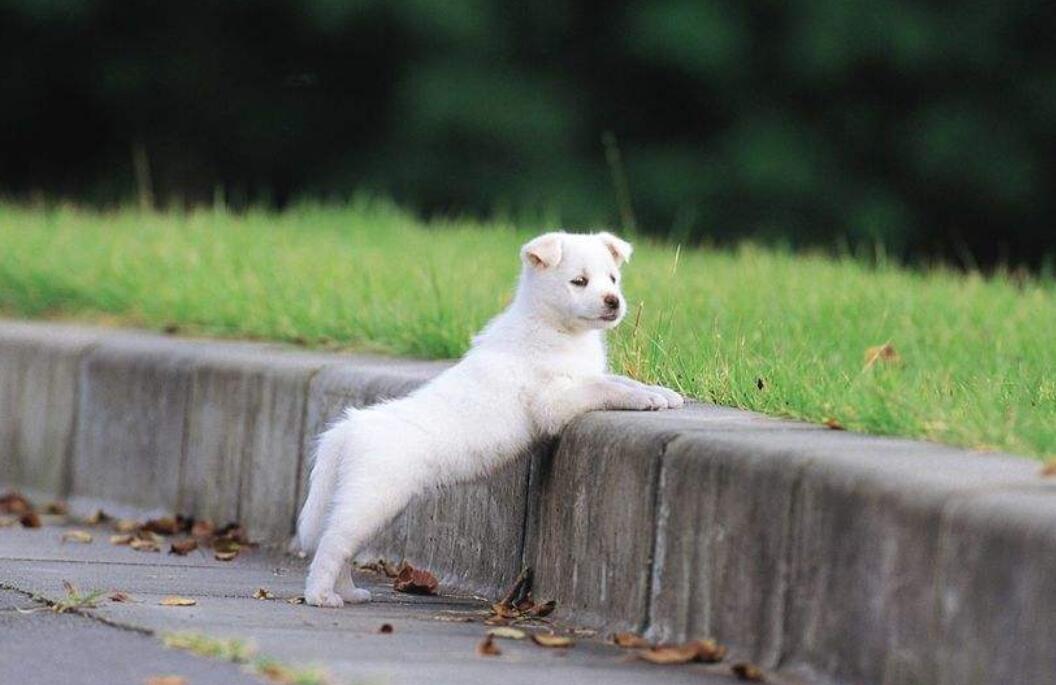
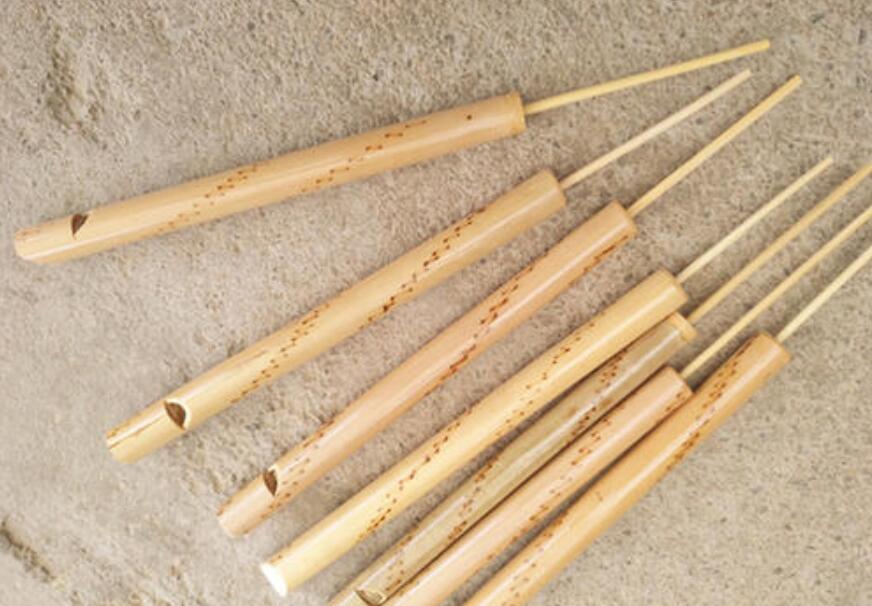
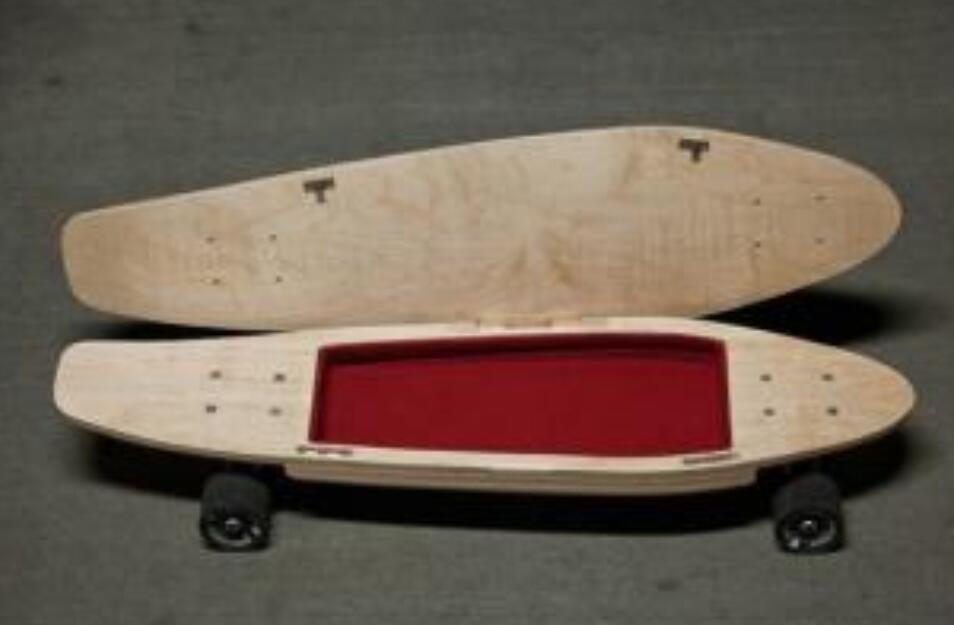
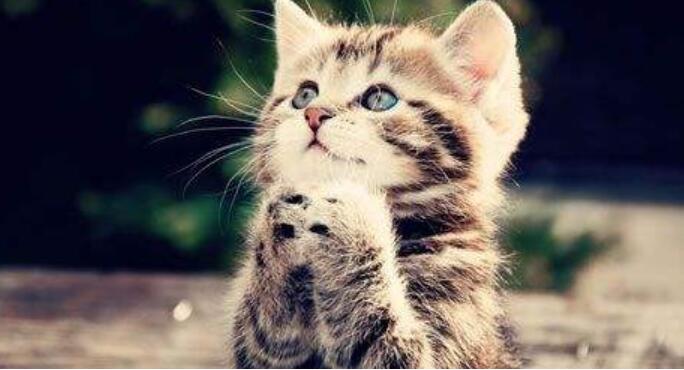
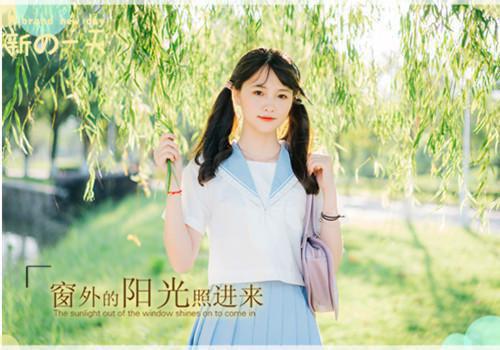
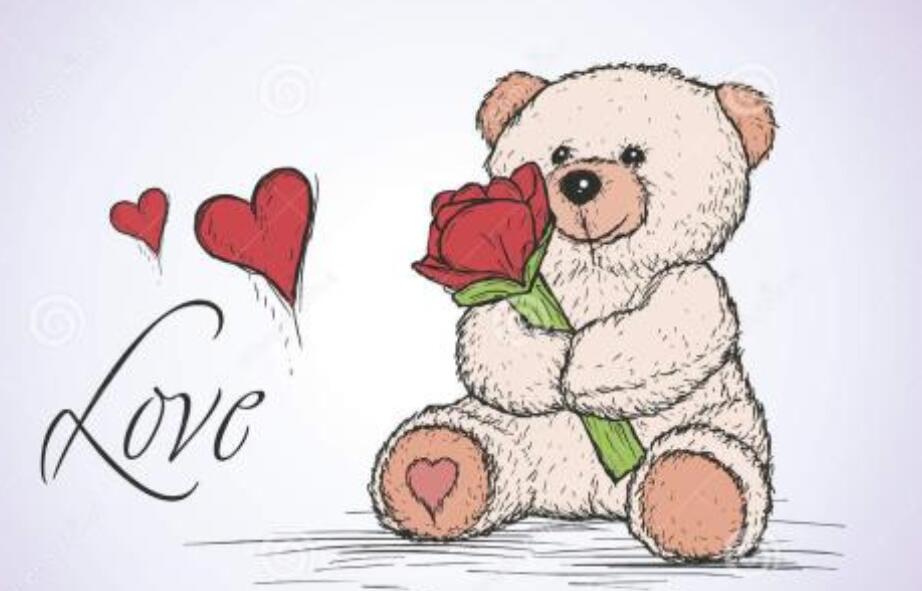
 黑色834867236
黑色834867236

